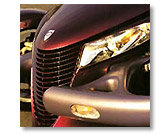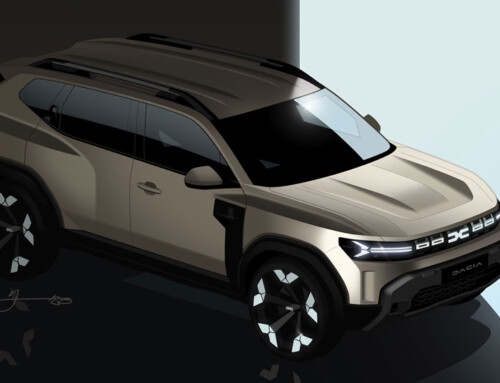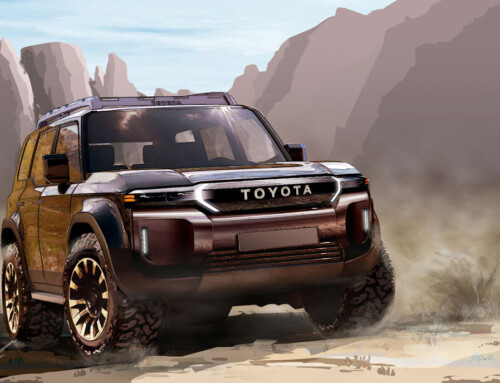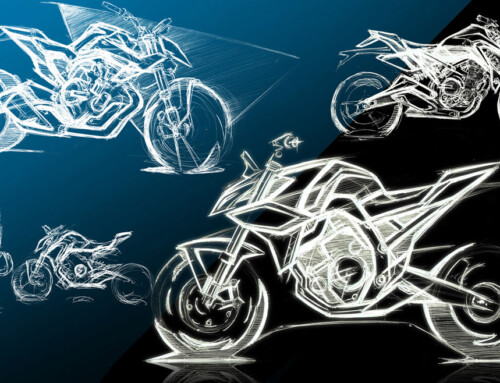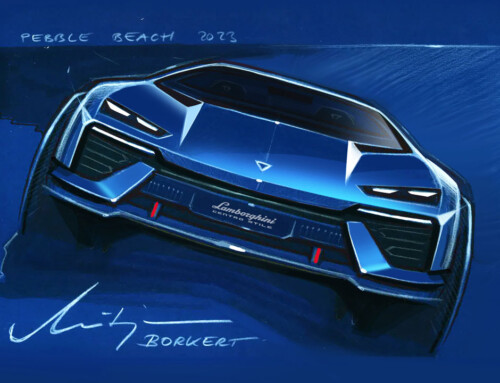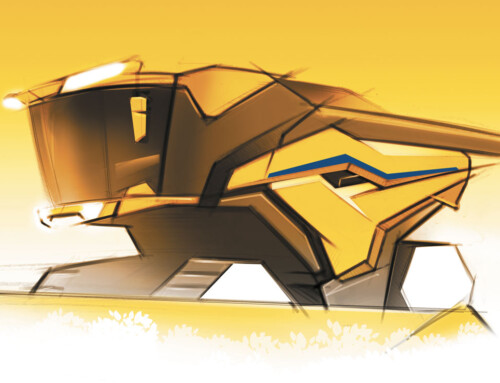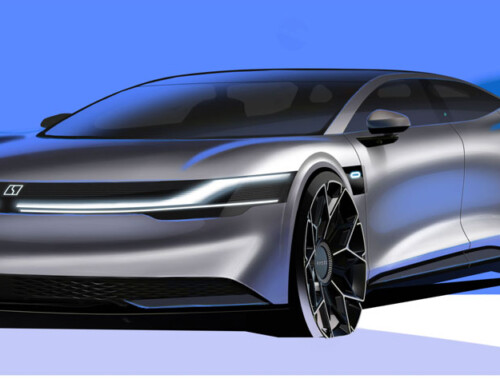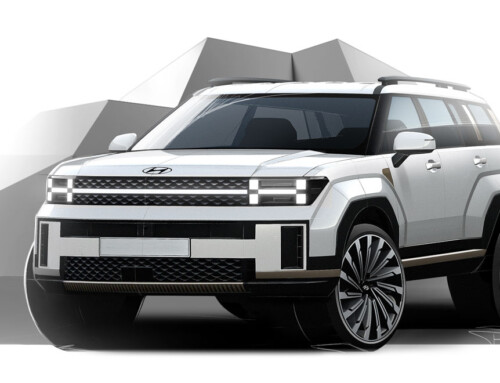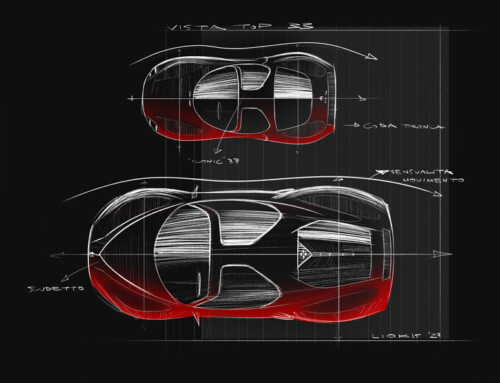The air is hot, the landscape and atmosphere typical of the southern Californian coast. The car, however, is thoroughly unusual, though for us Europeans its looks conjure up an ‘all-American’ image. You cannot go unobserved in an open-top metallic-purple hot rod. People in cars drawing up at the traffic lights raise thumbs and open windows, enthusiastically expressing their approval in a unanimous “Hey, that’s cool!”.
Original, fun and enticing, the Plymouth Prowler is a car conceived for those who want to stand up and get noticed. It is therefore ideal, too, for revitalising a brand and drawing attention to its totally revamped range. Prowler is the first model to be specifically designed for the Plymouth marque since the 1969 Barracuda and its design kindled great enthusiasm in all those involved, from designers to engineers, marketing men and on up to the company directors, as was demonstrated by the dark-bespectacled on-stage arrival aboard the Prowler at the Detroit show of Bob Lutz and Bob Eaton – chairman and CEO of the Chrysler Corporation – to officially announce production of the model.
The first pair of running prototypes were presented to the press this summer in the San Diego area, the Prowler’s home base. The concept was in fact the work of the Californian Chrysler Pacifica studio, whose design team (a staff of thirteen led by Tom Tremont) was assigned the task in May 1990 of creating new proposals for niche vehicles. By the following June, thirteen concepts had been visualised in the form of scale models, with six of them treated to their own ‘dioramas’, a sort of stage set with photographic backdrop that identifies the context into which the car would ideally slot.
Very varied themes were explored, from a vehicle for the disabled, thought of for young extreme-sports enthusiasts who’d had accidents, to cars for work and leisure. Of them all, the hot rod proposed by young designer Kevin Verduyn stood out, presented to management the following year as a 1:1 model. This was the moment that the car assumed its Prowler title, the restless feline image expressed in an aggressive high-waisted open-top two-seater with triangular plan, its front end, reminiscent of 1940s Cords, flanked by mudguards detached from the body and protected by a pair of whiskery bumpers.
The Prowler took its first bow as a concept car at the 1993 Detroit show, with the rumours of a low production run confirmed three years later. Right from the start the hot rod was designed to use as many parts as possible from the volume models of the Chrysler range – the independent rear suspension is from Stratus and Cirrus, the steering and brake calipers from the minivans, gearbox and transmission from the Vision, damper parts from the Viper, etc. The Prowler will be produced from early next year at the Conner Avenue Assembly Plant – the same Detroit facility where the Viper RT/10 and GTS are put together.
Devoid of a hard-top (“It would be out of place on a car like this,” its designers say), the Prowler offers a canvas hood when necessary, with the car – unlike the majority of traditional roadsters – remaining aesthetically unscathed. A baggage trailer is available instead – indispensible for those wishing to travel with more than just the windcheater that the virtually non-existant rear compartment of the Prowler can accommodate.
There are no plans to export the Prowler outside the American market. It is an exotic creature, born to live in its New World context just as the first small-scale concept model inhabited its diorama. To put it on our roads would be as incongruent as EuroDisney is in the Paris countryside, a piece of America marooned in the heart of old Europe, far from the sun of California and Florida, cast off from any environmental or cultural reference.
The article continues in Auto & Design no. 100

